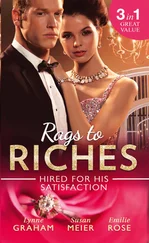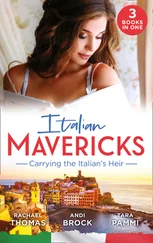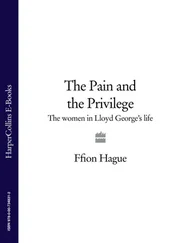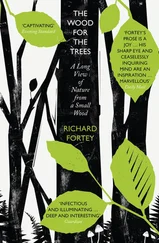I WAS NAMED after a racehorse. I knew this from an early age and considered it a distinction. I asked my father few questions about the equine Gerald. However, I learned from one of my father’s brothers after my father had died that my namesake had shown much promise when young but was later such a disappointment that he was sold by his owners. (When my father died in my twenty-first year he was certainly disappointed in me, although he had not gone so far as to disown me.)
My father’s name may well have appeared in race books as the owner or part-owner of Gerald (Black, blue sleeves, red band and cap) when he raced in and around Melbourne in the late 1930s. My father was certainly registered as the owner and the trainer of Geraldo (Yellow, black cap), which won a race at Kyneton and another at Cranbourne in 1950 but was later, like Gerald, sold at auction. And yet, my father would have paid not a penny towards the purchase price or the upkeep of either horse — he was a front man or a dummy for a man he sometimes called his best friend but who might be said to have been his evil genius. This was a man named Edward Ettershank, known always as Teddy. I had him in mind while I wrote about the character Lenny Goodchild in Tamarisk Row , my first published book. The boy Clement, the chief character of Tamarisk Row , has never met Lenny and thinks of him as a mysterious racing mastermind in faraway Melbourne. I met Teddy Ettershank a number of times but never knew what to make of him.
I’ll write more about Teddy in due course. Just now, I want to write about another matter altogether. For most of my life, I’ve railed in vain against an absurd practice followed by race stewards when upholding a protest by connections of a horse finishing third against a horse finishing first. Such a protest is lodged when the first horse past the post has interfered so severely with a rival that the rival finishes not even second but third, having been passed near the post by an innocent bystander, so to speak — a horse not at all involved in the bumping or the crossing of paths. For as long as I can recall, the stewards, if they deem that interference prevented the victim from finishing ahead of the interferer, then go on to award first place to the innocent bystander, as I called the second placegetter. Presumably, the stewards are punishing the interfering horse by placing it behind the victim of the interference. And yet, this goes against common sense. The interfering horse beat the innocent bystander on its merits. If no interference had taken place, then the third horse past the post would have finished first and the innocent bystander would have finished third. This is the situation that the stewards should aim to restore. To put the matter another way: instead of punishing the interferer, the stewards should compensate the victim of interference by putting it ahead of the horse that cost it the race.
All of the above seems blindingly obvious to me, but every few years I seethe with anger and frustration when a protest by a third placegetter is upheld and the second placegetter is awarded the race. Then I seethe even more when I hear some know-all journalist or even one of the stewards trying to explain the crazy decision. The more they talk, the more confused they become. One of their favourite arguments is that the second placegetter must not be punished unjustly. Fair enough, but neither should the second placegetter be rewarded unjustly. Never, under any circumstances, was the second placegetter — the innocent bystander, as I have called it — going to win. If the race had been run without interference, the innocent one would have finished third , and the victim of interference would have won. I can’t put it more simply than that, and yet the so-called experts have been getting it wrong during my seventy years as a follower of racing and probably for much longer.
Luckily, the stupidity that I’m complaining about prevails only once or twice every decade in Victoria. After one instance, about twenty years ago, I wrote a short letter to the editor of the weekly Winning Post . The letter was published, and for a few days I hoped that my few simple paragraphs would be read by someone of influence who would talk to someone else of even more influence, and so on, until an ancient wrong would be righted at last. Nothing of the sort happened. I thought at least one other reader might have written to the editor in support of my argument, but no such letter was published.
Perhaps ten years ago, after another of the monstrous injustices had been perpetrated, I found among the letters to the editor of Winning Post a letter rather like my earlier one. The writer was Bruno Cannatelli, a well-known photographer who attends every Melbourne race meeting. I had never spoken to Bruno but I did so a few weeks later at Sandown. I felt encouraged to be speaking to someone who shared my own views, but I wondered how we two could ever convince the thick-headed majority.
After I wrote that paragraph above about Teddy Ettershank, I left off writing for a few days. I travelled to Melbourne to see the Caulfield Cup. (I’m writing these pages in 2013, and the Cup was won by Fawkner, carrying Dark blue, white armbands and cap.) On the day before the Cup, I attended the annual dinner of the Thoroughbred Club of Australia. Along with ten others on my table, I was a guest of Kevin O’Brien. Kevin and his wife, Tanith, are proprietors of Lauriston Stud at Corinella (Orange and green quarters and quartered cap). Near me at the table was Bruno Cannatelli. I reminded him that we had met a few years before at Sandown and had shared our views on protests. I told him that I had since left Melbourne and hardly ever mixed with racing folk any more, whereas he was a widely known and well-respected racegoer. I urged him to go on fighting the good fight: to try to persuade anyone who would listen that a better way exists for the settling of protests by third placegetters against winners.
I may have sounded to Bruno as though I had given up the cause, but I’ll make this one last effort. I hereby appeal to all fair-minded readers of these pages. Surely you can appreciate the injustice of the present system of amending the placings after a successful protest by the third placegetter against the first horse past the post. And surely, also, you can appreciate the fairness of my suggestion for changing the present system. Well then, fair-minded reader, would you please talk to other racegoers about these matters? Would you use whatever influence you might have to bring forward the day when the stewards use common sense and not quaint rules of their own whenever they amend the placings after a certain sort of protest?
Fawkner’s Caulfield Cup is only a memory now, and I’m back at my desk trying to describe Teddy Ettershank. He was small enough to have been a jockey or, at least, a track rider. He must have applied, at some time, for a licence to train; my father told me once that the then chief steward, Alan Bell, had said to Teddy, the hopeful applicant, ‘As long as I’m chairman of the VRC stewards, Ettershank, you’ll never be a licensed trainer.’ Nowadays, a person in Teddy’s position would seek legal advice and would exercise his right of appeal to this and that higher authority. In Teddy’s heyday and mine, the issuing or the withdrawal of licences was wholly the province of the stewards. All their hearings and enquiries were carried out behind closed doors. An aggrieved person could appeal against the stewards’ decision but only to the committee of the Victoria Racing Club, the employers of the stewards. (I am not at all implying that racing was less ably managed then than now. In fact, I incline to the opposite view.) Anyway, Teddy was never a licensed trainer or even a registered owner, although he certainly owned and trained many a horse, using my father and others as front men or dummies, and I suspect that he enjoyed his reputation as a man of mystery. In Teddy’s time racing, as I’ve explained by now, was much concerned with secret knowledge, and Teddy was widely believed to have an abundance of such knowledge. I never saw him followed by a knot of spectators, as Jim Jenkins and other noted punters were sometimes followed, but if Teddy and his trusted man, Gerald Lavers (another Gerald!), had backed a horse, news of their doing so was soon all through the betting ring.
Читать дальше












